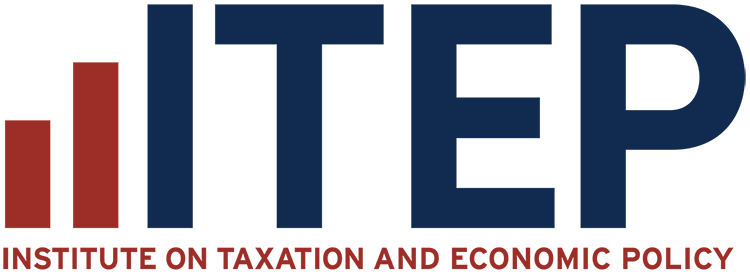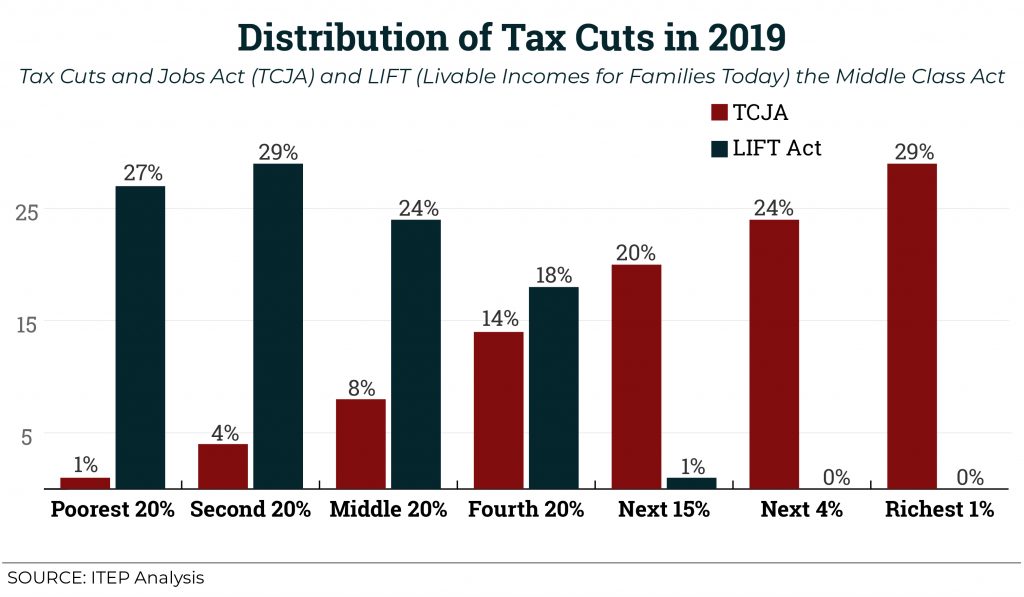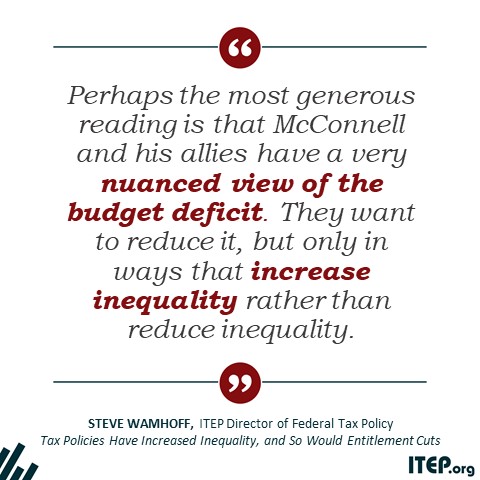
ITEP's Research Priorities
- 2025 tax debate
- Blog
- Cannabis Taxes
- Corporate Taxes
- Corporate Taxes
- Earned Income Tax Credit
- Education Tax Breaks
- Estate Tax
- Federal Policy
- Fines and Fees
- Immigration
- Income Taxes
- Inequality and the Economy
- ITEP Work in Action
- Local Income Taxes
- Local Policy
- Local Property Taxes
- Local Refundable Tax Credits
- Local Sales Taxes
- Maps
- News Releases
- Personal Income Taxes
- Property Taxes
- Property Taxes
- Publications
- Refundable Tax Credits
- Sales, Gas and Excise Taxes
- Sales, Gas and Excise Taxes
- SALT Deduction
- Select Media Mentions
- Social Media
- Staff
- Staff Quotes
- State Corporate Taxes
- State Policy
- State Reports
- States
- Tax Analyses
- Tax Basics
- Tax Credits for Workers and Families
- Tax Credits for Workers and Families
- Tax Reform Options and Challenges
- Taxing Wealth and Income from Wealth
- Trump Tax Policies
- Who Pays?
KUOW: A $40,000 Salary Is no Longer Middle Class in Washington State. Here’s Why.
October 26, 2018
Look what's happened to an income of $40,000. In 2015, the Institute on Taxation and Economic Policy (ITEP), based in Washington, D.C., looked at incomes in Washington state and found that a salary of $40,000 was still middle class. It was smack-dab in the middle of middle-earning incomes in the state. In 2018, ITEP looked again. This time, $40,000 had slipped a notch, to the second-lowest 20 percent of earners. The reason: More people in the state were making higher-end incomes.
The Olympian: Olympia Went to Court to Block an Income Tax Proposal. Two Years Later, It’s Backing Seattle’s Version.
October 26, 2018
In 2016, an Olympia household earning $25,000 a year paid about 13 percent of its income in state and local taxes, while a household earning $250,000 paid less than 4 percent, according to the resolution. A report this month from the Institute on Taxation and Economic Policy said Washington has the most regressive tax structure in the country, thanks to its lack of a personal income tax and comparatively high sales taxes.
We’re sorry to see you go…
October 25, 2018 • By ITEP Staff
Thank you for your response! We understand that in this age of rapid communication, too many emails can bring unwanted clutter to your inbox while too few emails can leave you without timely information on tax policy. Remember, you can always resubscribe using the form below and tailor your ITEP email subscription to fit your […]
Massachusetts Budget and Policy Center: Who Pays? Low and Middle Earners in Massachusetts Pay Larger Share of their Incomes in Taxes
October 25, 2018
Taxes are the main way communities pay for the things we do together. Taxes pay for essential programs and infrastructure we take for granted, like fire protection, public education, and health inspectors; roads, bridges, and public transit; and the support for people facing hard times. Examining how much people at different income levels pay in taxes is important when considering the fairness of tax policy.
Oregon Center for Public Policy: Measure 105 Would Set Oregon Back
October 25, 2018
Immigrants, regardless of their immigration status, give the economy a boost. In Marion County alone, undocumented immigrants pay more than $14 million in taxes every year to local and state authorities. Oregon is better for having immigrants, and will be better for it for generations to come. Read more here
News and Tribune: In Indiana and Illinois, Taxes Hit Low-earners Hard
October 25, 2018
TERRE HAUTE -- Low-earning residents of Indiana and Illinois pay a greater share of state and local taxes than those in all other Midwestern states, and those in most states nationally, according to a new study by a non-partisan think tank.
U.S.: Who Pays? 6th Edition
October 25, 2018 • By ITEP Staff
The Columbia Missourian: New Tax on Motor Fuels Would Rev up Road and Bridge Spending
October 25, 2018
As it stands, only Alaska has a lower fuel tax than Missouri. Every neighboring state’s tax is higher. And more than 20 states increased their fuel taxes between 2013 and 2017, according to Institute on Taxation and Economic Policy website. Read more
The Garden Island: Gap Keeps Growing Between Rich, Poor
October 25, 2018
The study finds that those in the bottom fifth of the income spectrum in Hawaii pay 15 percent of their income in state and local taxes, while those in the top 1 percent pay only 8.9 percent, “which exacerbates inequality in our state,” according to a press release about the study.
Bloomberg: Kamala Harris Tax Plan Would Cost $2.8 Trillion, Conservative Group Says
October 24, 2018
ITEP’s Wiehe said the plan is more highly targeted than the 2017 tax law to help low-income workers. The poorest 20 percent would see a $2,100 benefit under the Harris plan, compared with $80 under the GOP plan, she said. About 123 million workers would receive tax breaks under the plan, according to Wiehe.
Shaking up TCJA: How a Proposed New Credit Could Shift Federal Tax Cuts from the Wealthy and Corporations to Working People
October 24, 2018 • By Aidan Davis

A new federal proposal, the Livable Incomes for Families Today (LIFT) the Middle Class Act, would create a new refundable tax credit for low- and middle-income working families who were little more than an afterthought in last year’s federal tax overhaul. This proposal would take the place of TCJA, providing tax cuts similar in cost to the recent federal tax law but targeted toward working people rather than the wealthy. ITEP analyzed the bill, proposed by California Senator Kamala Harris, and compared its potential impact to TCJA.
Real Change: Study: Washington Bottoms Out on US Tax Assessment
October 24, 2018
Guess what? Washington state’s taxation system continues to be one of the most regressive in the country. This news comes from the Institute on Taxation and Economic Policy (ITEP), which did a deep dive into the taxation policies of all 50 states.
The Fiscal Times: Democrats Take Aim at Republicans on Entitlement Cuts
October 24, 2018
The ITEP analysis of federal tax cuts from 2001 to 2018 found that they had reduced revenues by trillions of dollars, with a big chunk of the benefits flowing to the wealthiest 1 percent of taxpayers. “By the end of 2025, the tally of tax cuts will grow to $10.6 trillion,” the ITEP report says. “Nearly $2 trillion of this amount will have gone to the richest 1 percent.”
The Journal Record: Prosperity Policy: An Upside-down Tax System
October 24, 2018
A modestly progressive income tax slightly offsets our regressive sales taxes. But Oklahoma lawmakers cut our top income tax rate by nearly 25 percent since 2004, further tipping the scales to the wealthiest households. Then while grappling with massive budget shortfalls caused in part by these tax cuts, lawmakers took aim at measures that primarily benefit low- and middle-income working families by making the state Earned Income Tax Credit non-refundable and freezing the state standard deduction, while leaving cuts to the top income tax rate in place.
Hawaii Public Radio: Hawaii Tax System Places Larger Burden on Low Income Residents
October 24, 2018
Low-income residents in Hawaii are paying a higher share of their income in taxes than higher level earners. That is the conclusion of a recent report from the Institute on Taxation and Economic Policy titled Who Pays? The Hawaii tax system is considered highly regressive, due to heavy reliance on the General Excise Tax, or GET. This is despite a progressive, graded state income tax and the lowest property taxes in the nation.
Third and State: Pennsylvania’s Terrible Tax Code Asks More of You as You Make Less: Hitting Community’s of Color Especially Hard
October 23, 2018
The Commonwealth once again claims its spot in the “Terrible 10” most unfair tax structures in the nation. The lowest 20% of income earners in the state pays more than double (2.3 times) their share of family income on state and local taxes than the top 1%.
Hawai’i Budget & Policy Center: Hawaii’s Tax System Exacerbates Inequality
October 23, 2018
A new report out from the Institute on Taxation and Economic Policy (ITEP) provides the vital statistics for each state’s tax system. It lays out, in clear and compelling numbers, the sobering message that Hawaiʻi taxes—and those in the United States on average—increase inequality between rich and poor.
Florida Policy Institute: Amendment 5 Would Lock in the Regressive Policies and Abysmal Funding Levels that Perpetuate Inequality
October 23, 2018
Florida’s unfair tax system, which forces low-income residents to contribute the most as a share of their household incomes, along with the state’s worst-in-the-nation per-person investment in public services, would be locked in under Amendment 5.
NBC: Democrats Find New Ways to Talk About Entitlement Cuts in Campaign’s Closing Days
October 23, 2018
Democrats on the congressional Joint Economic Committee issued the study, based on calculations by the non-profit Institute on Taxation and Economic Policy, late last week. It shows that the estimated $2 trillion cost of the Bush and Trump-era tax cuts through 2025 is the same amount which Republicans have proposed cutting from Medicare, Medicaid, Social Security and Obamacare.
Tax Policies Have Increased Inequality, and So Would Entitlement Cuts
October 23, 2018 • By Steve Wamhoff

Conversations about economics often take place on different planets, it seems. Economists and analysts note rising inequality in America. And it’s not just lefty analysts. The credit ratings firm Moody’s chimed in earlier this month, warning that inequality “is a key social consideration that will impact the U.S.’ credit profile through multiple rating factors, including economic, institutional and fiscal strength.”
Enid News & Eagle: A Low Tax State for Only Some Oklahomans
October 23, 2018
While Oklahoma has a reputation as a low tax state, poor and middle-income Oklahomans are actually paying a greater share of their income in taxes than the national average, while the richest 5 percent of households — with annual incomes of $194,500 or more — pay less.
Washington Examiner: Think tank: Texas Isn’t a Low-tax State if You’re Poor
October 23, 2018
Carl Davis for the Institute on Taxation and Economic Policy: [ M]any states traditionally considered to be “low-tax states” are actually high-tax for their poorest residents. The “low tax” label is typically assigned to states that either lack a personal income tax or that collect a comparatively low amount of tax revenue overall. But a focus on these measures can cause lawmakers to overlook the fact that state tax systems impact different taxpayers in very different ways, and that low-income taxpayers in particular often do not experience these states as being even remotely “low tax.”
Beacon Journal/Ohio.Com Editorial Board: A Taxing Matter Goes Missing in the Governor’s Race
October 22, 2018
It follows that low- and middle-income Ohioans pay a higher share than the national average, and wealthy Ohioans pay a lower share. To a degree, that is expected in view of the vastly larger incomes of wealthy Ohioans. At the same time, the state would be well served by altering the shares to make the state and local system more fair, to reflect how new income in recent years, even decades, has flowed largely to households at the highest income rungs.
NorthJersey.com: 2018 Elections: Candidates Taking Wait-and-See Approach to SALT Deductions
October 22, 2018
A study by the Institute on Taxation and Economic Policy, a non-partisan think tank, found that a majority of New Jersey taxpayers in every income group will pay less taxes next year than they did in 2017 as a result of last year’s federal tax-code overhaul. The cap is expected to affect those in high-income brackets the most. Thousands of New Jersey homeowners rushed to prepay their 2018 taxes in December to take advantage of bigger deductions on their 2017 returns before the cap took effect.
NC Policy Watch: North Carolina’s Tax Code Isn’t Helping the State’s Growing Inequality
October 22, 2018
Despite claims by the architects of North Carolina’s failed tax-cut experiment, policy choices since 2013 have not ensured that middle and low-income taxpayers are paying lower shares of their income in state and local taxes. Instead the richest taxpayers—whose average income is more than $1 million—continue to pay 33 percent less in state and local taxes as a share of their income than taxpayers who have averages incomes annually of $11,000, a threshold that aligns with deep poverty.
